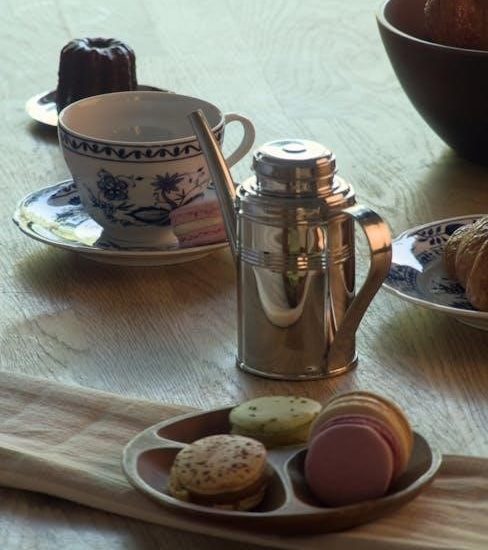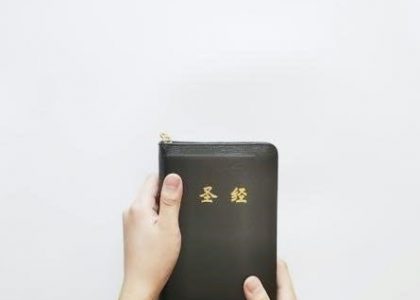Tea cup collecting is a captivating hobby that combines art, history, and culture. These delicate pieces offer a glimpse into craftsmanship and tradition, making each cup a unique treasure. Collectors appreciate them for their beauty, historical significance, and the joy of building a meaningful collection. This guide explores the world of tea cups, from their origins to modern collecting strategies, helping enthusiasts navigate the fascinating realm of tea cup collecting with confidence and passion.
1.1. The History of Tea Cups and Their Cultural Significance
Tea cups have a rich history rooted in ancient traditions, with origins tracing back to China during the Ming Dynasty. The iconic Chenghua Emperor’s 3-inch teacup, valued at $36 million, exemplifies their cultural and artistic significance. Initially crafted from porcelain, tea cups spread globally, adapting to regional tastes. By the 18th century, European manufacturers like Meissen and Royal Vienna popularized decorative designs, blending East Asian influences with Western elegance. These pieces became symbols of wealth and refinement, reflecting the cultural exchange and craftsmanship of their time.
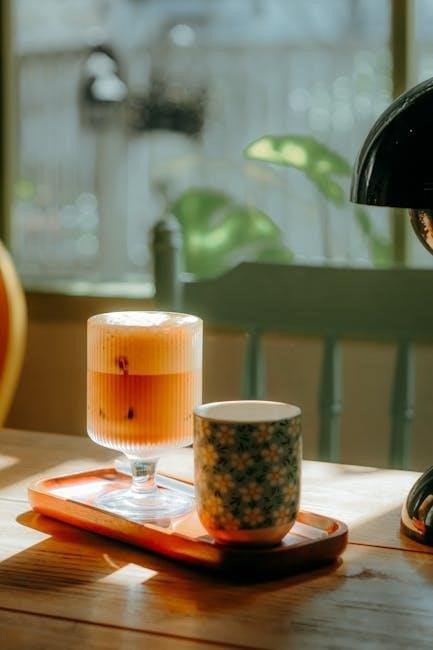
1.2. Why Collect Tea Cups?
Collecting tea cups offers a blend of passion and investment, appealing to both enthusiasts and connoisseurs. For some, it’s about preserving history and cultural heritage, while others appreciate the artistic craftsmanship. Tea cups, like the Chenghua Emperor’s legendary example, can become family heirlooms or valuable assets. Whether for display, use, or investment, each cup tells a unique story, making the hobby deeply rewarding and personal. This pursuit allows collectors to connect with the past while building a legacy for the future.
1.3. Overview of the Guide
This guide provides a comprehensive exploration of tea cup collecting, designed for both newcomers and seasoned enthusiasts. It delves into the history and cultural significance of tea cups, offers insights into valuation, and shares strategies for building and maintaining a collection. Readers will learn to identify rare patterns, understand manufacturer marks, and navigate the market. With tips on care, display, and avoiding common mistakes, this guide aims to enhance your knowledge and passion for tea cup collecting, ensuring a rewarding and enjoyable journey in this fascinating hobby.
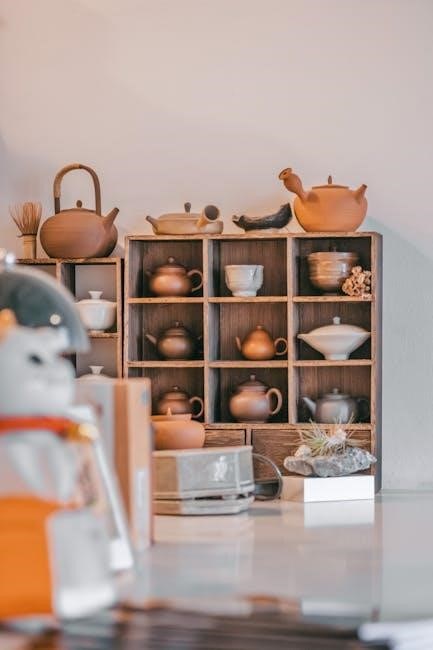
Understanding the Value of Tea Cups
Tea cups’ value is determined by historical significance, rarity, manufacturer marks, and condition. Factors like age, unique designs, and provenance greatly influence their worth in the market.
2.1. Factors Influencing the Value of Tea Cups
The value of tea cups is shaped by several key factors, including age, rarity, condition, and manufacturer marks. Antique tea cups from renowned makers like Meissen or Royal Vienna often command high prices due to their historical significance and craftsmanship. Rare patterns, such as the Chenghua Chicken Cup, can fetch millions at auctions. The condition of the cup is also critical; chips, cracks, or fading designs can significantly lower its worth. Additionally, the presence of original saucers or lids and the cup’s historical provenance can further enhance its value in the collector’s market.
2;2. Rare and Valuable Tea Cup Patterns
Certain tea cup patterns are highly sought after by collectors, driving their value significantly. The Chenghua Chicken Cup, a Ming Dynasty treasure, is one of the rarest and most valuable, selling for millions. Other prized patterns include Meissen’s cherub designs, Royal Vienna’s gold-accented motifs, and Chinese blue-and-white landscapes. Unique shapes, such as lidded cups or those with twisted handles, also add to their desirability. These patterns often reflect historical artistry and cultural influences, making them true gems in any collection.
2.3. The Role of Condition in Determining Value
The condition of a tea cup significantly impacts its value. Chips, cracks, or repairs can drastically reduce its worth, while mint condition pieces retain or increase in value. Even minor flaws, like faint hairline cracks or worn gilding, can lower appraisal values. Proper care and preservation are essential, as damaged or restored pieces often sell for less. Collectors should always prioritize cups in excellent condition, as they are more desirable and valuable. This emphasis on state underscores the importance of handling and maintaining tea cups with care.
Identifying Tea Cup Origins and Age
Identifying tea cup origins and age involves examining manufacturer marks, historical designs, and materials. Expertise in recognizing patterns and stamps helps determine authenticity and historical context accurately.
3.1. How to Recognize Antique Tea Cups
Recognizing antique tea cups requires a keen eye for detail. Look for intricate hand-painted designs, metallic trims, and unique shapes. Marks on the base often indicate the manufacturer and era. For instance, Meissen pieces feature crossed swords, while Royal Vienna may have a blue anchor. Check for patina and wear, which signify age. Handle shapes and saucer sizes can also hint at the period. Researching historical patterns and consulting experts helps confirm authenticity. These steps ensure a reliable assessment of an antique tea cup’s origins and value.
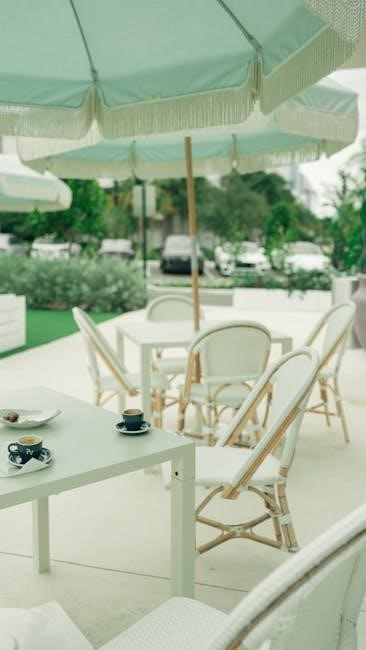
3.2. Manufacturer Marks and Stamps
Manufacturer marks and stamps are essential for identifying antique tea cups. These marks, often found on the base or back, reveal the maker, era, and sometimes even the artist. For example, Meissen porcelain features crossed swords, while Royal Vienna often uses a blue anchor. Chinese tea cups may have reign marks or studio signatures. These stamps not only authenticate the piece but also provide insights into its history. Collectors should examine marks carefully, as they can be small or intricate. Reference guides and expert appraisals can help decode these symbols, ensuring accurate identification and valuation.
3.3. Dating Tea Cups by Design and Material
Dating tea cups involves examining design and material. Antique cups often feature intricate patterns like cobalt blue motifs or gilded accents, common in 18th-century European porcelain. Materials vary, with early pieces made from delicate bone china, while later ones use thicker ceramic. Handle shapes, rim styles, and foot designs also indicate era. For instance, Victorian-era cups often have ornate handles and floral designs. By analyzing these elements, collectors can narrow down the time period and origin, aiding in accurate dating and valuation. This method complements manufacturer marks for a precise historical context.
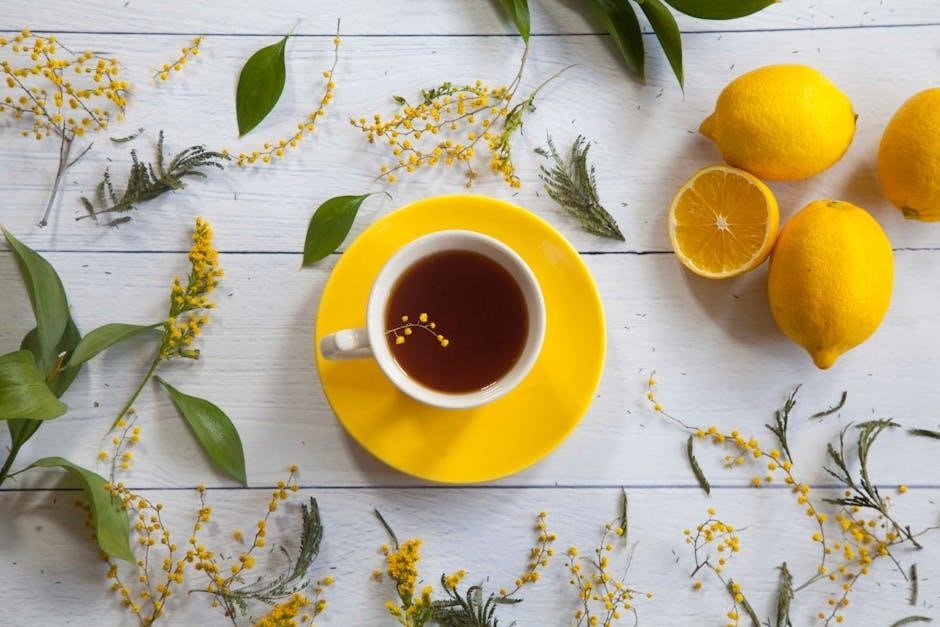
Popular Tea Cup Manufacturers
Renowned manufacturers like Meissen, Royal Vienna, and Chinese and Japanese artisans craft exquisite tea cups. Each brings unique styles, from vibrant patterns to delicate hand-painted designs.
4.1. Meissen Porcelain Tea Cups
Meissen, a German porcelain pioneer, is celebrated for its intricate designs and exceptional craftsmanship. Their tea cups, often adorned with cherubs and vibrant colors, are highly sought after by collectors. The iconic Blue Onion and Red Dragon patterns are particularly valuable. Meissen’s attention to detail and historical significance make each cup a masterpiece, reflecting European artistic influences. Collectors prize these pieces for their durability and timeless beauty, ensuring their place in the world of antique tea cup collecting.
4.2. Royal Vienna and Other European Manufacturers
Royal Vienna porcelain is renowned for its elegant designs and golden accents, often depicting human figures and floral motifs. Ernst Bohne Söhne, another German manufacturer, produced tea cups with twisted shapes and fish-skin textures, adorned in dusty pink and cream hues. The iconic Blue Anchor mark on their pieces adds to their royal appeal. Other European brands, like Royal Worcester and Minton, are also prized for their intricate floral patterns and gilded edges, making their tea cups highly collectible and valuable additions to any collection.
4.3. Chinese and Japanese Tea Cup Artistry
Chinese and Japanese tea cups are celebrated for their exquisite craftsmanship and cultural depth. Chinese examples often feature intricate blue-and-white patterns with natural motifs, while others display vibrant hand-painted designs. The Chenghua Emperor’s tea cup, a 3-inch Ming Dynasty piece, is a pinnacle of Chinese artistry. Japanese tea cups emphasize minimalism and harmony, often with subtle glazes and natural themes. Both traditions blend functionality with artistic expression, reflecting their unique cultural heritages and making them highly sought after by collectors for their beauty and historical significance.
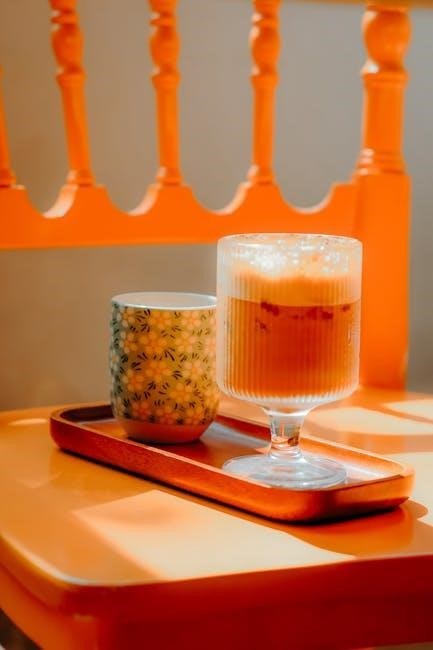
Collecting Strategies
Focus on quality, rarity, and personal taste. Research, set budgets, and seek expert advice to build a meaningful collection. Patience and strategy are key to success.
5.1. Building a Diverse Collection
Curating a diverse tea cup collection involves exploring various eras, styles, and manufacturers. Consider pieces from renowned makers like Meissen, Royal Vienna, and Chinese artisans. Mix patterns, from intricate floral designs to minimalist aesthetics, to create visual interest. Incorporate both rare and everyday items to reflect the breadth of tea culture. Diversifying by material, such as porcelain, ceramic, or bone china, adds depth. Aim for a balance between personal favorites and historically significant pieces to craft a collection that tells a story.
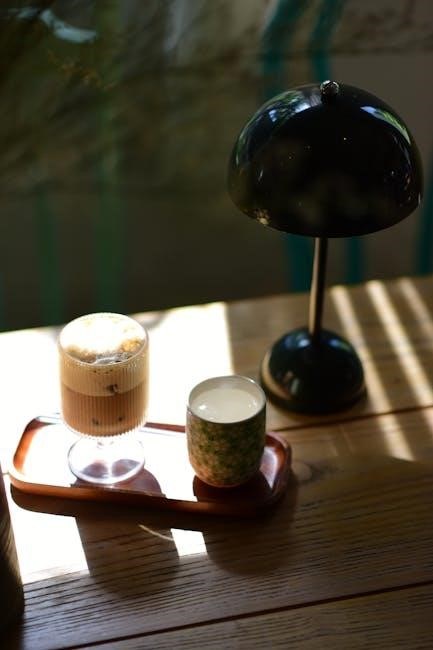
5.2. Tips for Buying at Auctions and Estate Sales
When purchasing tea cups at auctions or estate sales, research thoroughly beforehand to understand market values. Inspect items for chips, cracks, or repairs, as these can significantly impact value. Look for rare patterns and manufacturer marks, as they often indicate higher worth. Set a budget and stick to it, avoiding impulse buys. Consider the condition and rarity of the piece, as well as its historical significance. Don’t hesitate to ask questions or seek expert opinions. Remember, patience and diligence can lead to discovering hidden gems.
5.3. Avoiding Common Mistakes in Collecting
When building a tea cup collection, avoid common pitfalls like ignoring manufacturer marks or rare patterns, which can drastically affect value. Don’t overlook condition—chips or repairs can devalue a piece. Impulse buying without researching market prices often leads to overpaying. Additionally, don’t assume all old tea cups are valuable; age alone doesn’t guarantee worth. Finally, avoid skipping professional appraisals, as they provide crucial insights. By being informed and cautious, collectors can avoid costly errors and build a meaningful, valuable collection.
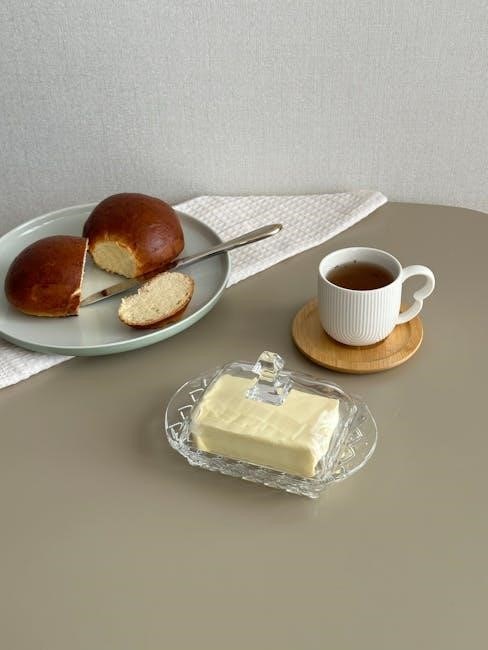
Tea Cup Maintenance and Display
Proper care ensures longevity. Clean gently, avoid harsh chemicals, and store in protective cases. Display on shelves or stands to showcase beauty. Consider insurance for valuable pieces.
6.1. Proper Care and Cleaning Techniques
Proper care is essential to preserve tea cups. Use mild soap and lukewarm water, avoiding abrasive materials. Gently wipe with a soft cloth, ensuring no residue remains. Dry thoroughly to prevent water spots. Handle with care to avoid chips or cracks. Store in protective cases or padded boxes to safeguard against damage. Regular cleaning maintains their beauty and value. Avoid exposure to extreme temperatures or harsh chemicals, as they can degrade materials. Proper maintenance ensures your collection remains pristine and enjoyable for years to come.
6.2. Displaying Your Collection Beautifully
Displaying tea cups elegantly enhances their charm. Use glass-front cabinets or tiered stands to showcase their intricate details. Group similar styles or patterns together for a cohesive look. Consider thematic displays, like pairing cups with saucers or highlighting specific manufacturers. Soft lighting can accentuate colors and designs. Rotate your collection periodically to avoid fading and share different pieces. Creative presentation adds to the beauty and personal story of your collection, making it a focal point in any room.
6.3. Insurance and Preservation Best Practices
To safeguard your tea cup collection, consider insurance tailored for antiques. Regular appraisals ensure accurate valuations. Store pieces in acid-free materials and climate-controlled environments to prevent damage. Avoid extreme temperatures or humidity. Handle cups with care, using gloves to prevent oil transfer. For fragile items, custom cases offer superior protection. Document each piece with photos and provenance for insurance purposes. Professional restoration is recommended for damaged items. By prioritizing preservation, you protect your collection’s value and legacy for future generations.
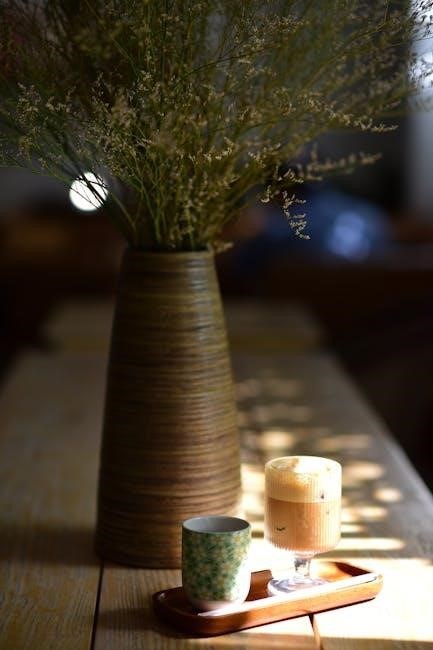
The Market for Tea Cups
The market for tea cups is vibrant, with prices influenced by rarity, condition, and brand. Auction houses often set benchmarks, guiding collectors in making informed decisions.
7.1. Current Trends in Tea Cup Collecting
Current trends in tea cup collecting emphasize rarity, unique designs, and historical significance, with a strong focus on pieces from renowned manufacturers like Meissen and Royal Vienna. Collectors are increasingly seeking items with documented provenance, as these often command higher values at auctions. Additionally, there is a growing interest in sets with intricate patterns and those linked to cultural or royal heritage. Online marketplaces have also become popular platforms for buying and selling, making it easier for collectors to discover rare pieces. This shift highlights the evolving nature of tea cup collecting in the modern era.
7.2. Where to Buy and Sell Tea Cups
Tea cups can be sourced from various platforms, including online marketplaces like eBay and Etsy, where rare and vintage pieces are often listed. Antique shops, estate sales, and auction houses like Christie’s and Sotheby’s are also excellent venues for finding valuable tea cups. Additionally, collector forums and specialized communities provide opportunities to connect with other enthusiasts for buying or selling. For rarer items, consulting reputable dealers or attending antique fairs can yield unique finds. These diverse options cater to both seasoned collectors and newcomers, making it easier to expand or start a collection.
7.3. The Role of Auction Houses and Appraisers
Auction houses play a crucial role in the tea cup market, offering a platform for rare and valuable pieces to be bought and sold. They often host specialized sales, attracting collectors and connoisseurs. Appraisers are essential for determining the authenticity and value of tea cups, providing detailed assessments that guide pricing. Their expertise in identifying marks, materials, and historical context ensures fair market evaluations. By collaborating with auction houses and appraisers, collectors gain access to validated pieces, enhancing their collections while ensuring transparency and trust in transactions.
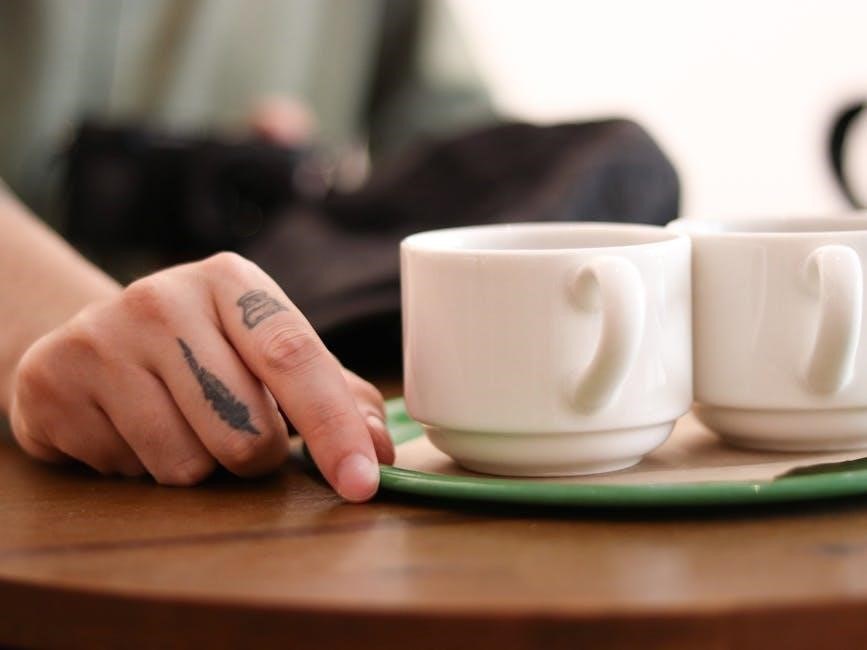
Advanced Tips for Experienced Collectors
Experienced collectors can enhance their expertise by focusing on rare patterns, networking with specialists, and staying informed about market trends to uncover unique, high-value pieces.
8.1. Identifying Rare and Unique Tea Cups
Identifying rare and unique tea cups requires a keen eye for detail and historical knowledge. Look for distinctive designs, such as hand-painted patterns or unusual shapes, which can signify rarity. Manufacturer marks, like the Meissen crossed swords or Royal Vienna’s blue anchor, are crucial for authentication. Additionally, condition plays a significant role; chips or cracks can diminish value. Researching current market trends and consulting experts can help collectors distinguish truly unique pieces from more common ones, ensuring their finds are both valuable and cherished.
8.2. Restoring Damaged Tea Cups
Restoring damaged tea cups requires skill and care to preserve their value and beauty. Professional restorers use techniques like ceramic repair or repainting to fix chips, cracks, or faded designs. However, over-restoration can reduce a cup’s authenticity and value. Collectors should avoid DIY fixes, as they often harm the piece. Instead, seek experts who specialize in antique porcelain. Even minor repairs can affect a cup’s worth, so it’s crucial to weigh the benefits of restoration against the risk of devaluing the item. Proper care and storage are key to maintaining your collection’s integrity and appeal.
8.3. Networking with Other Collectors
Networking with fellow tea cup enthusiasts is invaluable for building a collection. Join clubs, attend auctions, and participate in online forums to connect with other collectors. These communities offer insights, tips, and opportunities to trade or purchase rare pieces. Collaborating with experts and seasoned collectors can enhance your knowledge and refine your collection. Building relationships within the collector community fosters camaraderie and access to exclusive resources, ultimately enriching your journey as a tea cup collector and helping you discover unique, hard-to-find items for your collection.
Tea cup collecting is a rewarding journey, blending history, craftsmanship, and personal joy. Each cup tells a story, offering endless satisfaction for enthusiasts. Cheers to happy collecting!
9.1. Final Thoughts on Tea Cup Collecting
Tea cup collecting is a journey that intertwines art, history, and personal passion. Each cup, whether antique or modern, holds a unique story, reflecting craftsmanship and cultural heritage. Collectors find joy in the hunt, the discovery of rare patterns, and the preservation of these delicate treasures. As you explore this hobby, remember to appreciate the intricate details, the historical significance, and the beauty each piece brings. Whether displayed or cherished during tea time, every cup enriches your collection and connects you to a legacy of elegance and tradition.
9.2. Encouragement for New Collectors
Embarking on tea cup collecting is an exciting adventure that welcomes enthusiasts of all levels. Start small, exploring patterns and styles that resonate with your personal taste. The journey is as rewarding as the collection itself, offering opportunities to learn, connect, and grow. Don’t hesitate to seek advice from experts or join collector communities for support. Remember, every cup tells a story, and your collection will evolve over time; Embrace the thrill of the hunt, enjoy the process, and let your passion for tea cups guide you in building a treasure trove that reflects your unique style.
9.3. The Future of Tea Cup Collecting
The future of tea cup collecting is bright, with growing interest in rare and unique pieces. As digital platforms expand, collectors can connect globally, making it easier to discover and acquire valuable tea cups. Sustainability and ethical collecting practices are also gaining importance, encouraging collectors to preserve and cherish these delicate artifacts. With auctions and market trends evolving, the hobby remains dynamic and accessible to new enthusiasts. Whether focused on historical significance or artistic beauty, tea cup collecting will continue to captivate and inspire future generations of collectors and tea lovers alike.

